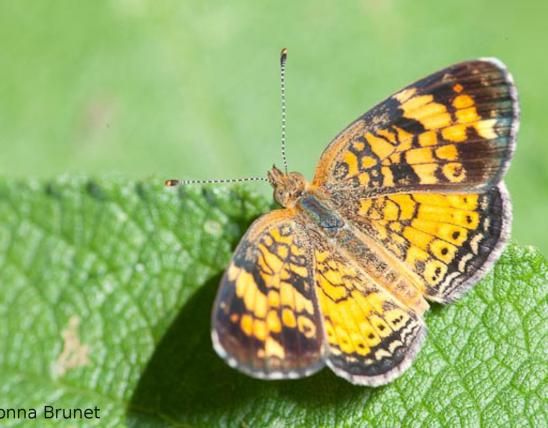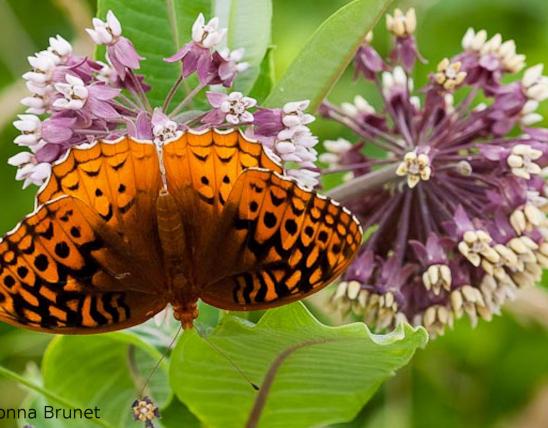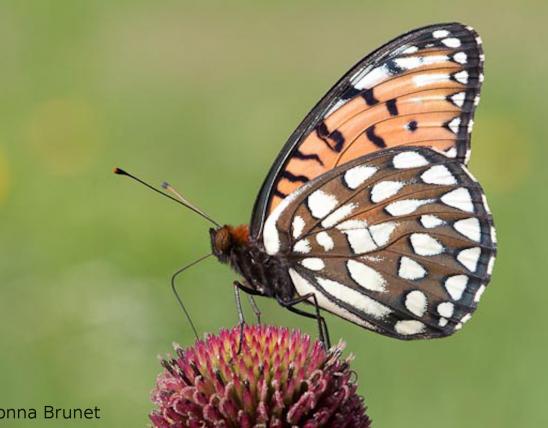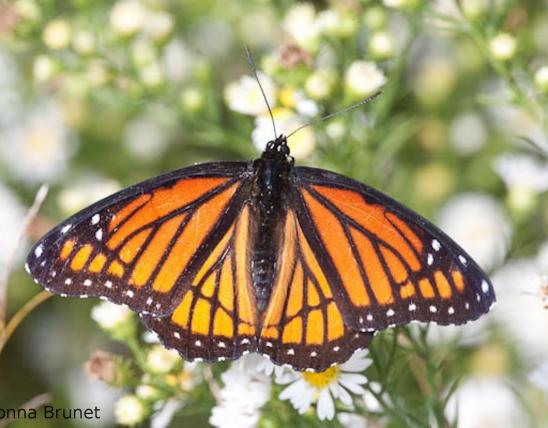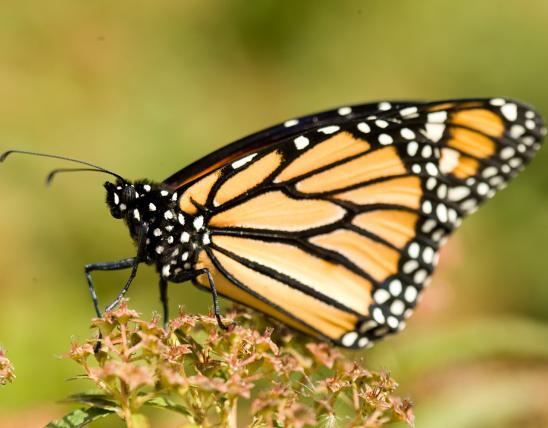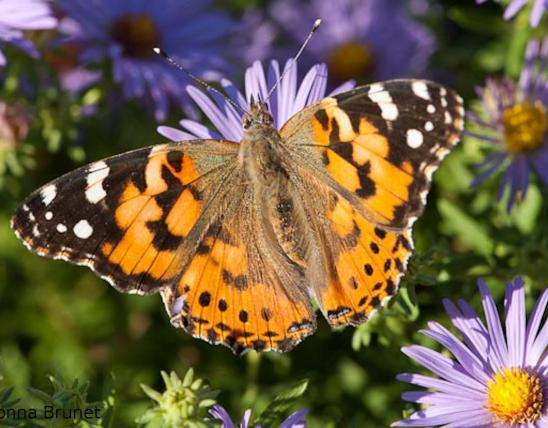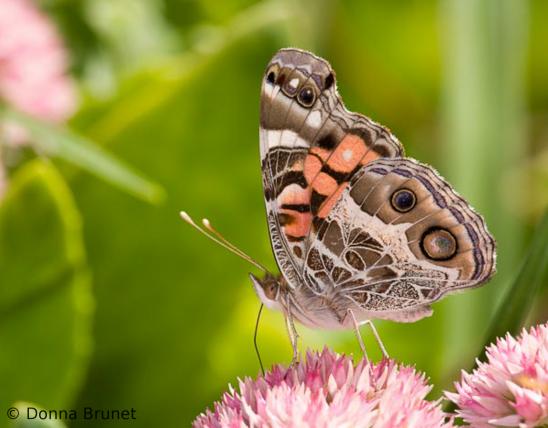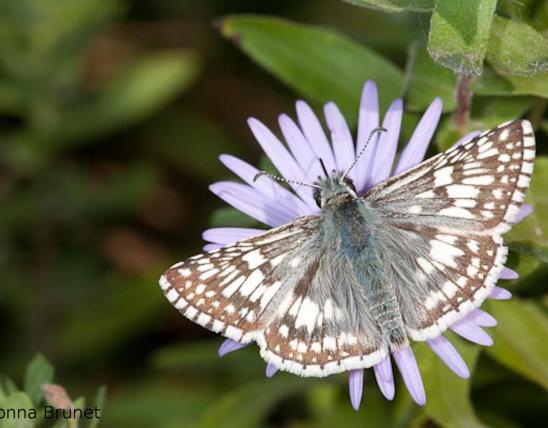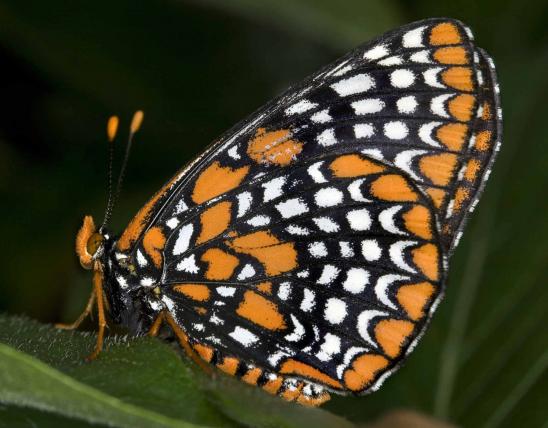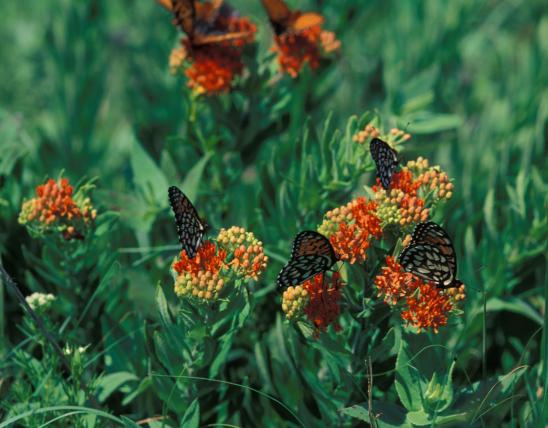
Viewed from above, silvery checkerspots have a row of dark spots just inside the margin of the hindwing. Among these submarginal dark spots, at least a few have white centers. There are usually no white crescent-shaped marks within the dorsal (upperside) black hindwing border, but if present, they are faint, not boldly marked. The ventral (underside) hindwing has a wide pale median band, and the brown-shaded patch on the margin has a distinctive white crescent within the patch. Also, outside the brown patch along the wing margin, there are additional white crescents.
Larvae are black, with many tiny white dots, and have branched black spines, with an orange stripe on each side (the orange stripe may be split lengthwise into two narrower stripes on some individuals).
Similar species: Missouri has several checkerspots, crescents, and fritillaries, but two are most likely to be confused with the silvery checkerspot:
- Pearl crescents are smaller butterflies and, viewed from above, do not have white centers in any of their dark submarginal hindwing spots; also, the black band along the forewing edge is narrower in the pearl crescent.
- Gorgone checkerspots look quite different from silvery checkerspots, viewing their zigzag-patterned undersides. But they are quite similar above: Look for the gorgone’s more distinct white crescents within the black hindwing border.
Wingspan: 1¼–2 inches.
Statewide.
Habitat and Conservation
Found May through September statewide in fields and in forest openings and edges. They are frequently found in damp woods, wet open habitats, or near streams. Adults often gather in numbers at moist spots, such as damp sand along a stream bank, to obtain water and minerals.
Food
Larval host plants comprise many species in the aster/daisy/sunflower family, such as our native asters (Symphyotrichum), sunflowers (Helianthus), black-eyed Susans (Rudbeckia), yellow crownbeard (Verbesina alternifolia), and more.
Adults visit flowers, moist ground, and animal droppings to obtain fluids and nutrients.
Status
Breeding resident. This species was formerly called Charidryas nycteis.
Life Cycle
There are two distinct broods in our state: mid-May through June, and mid-July to September. Males perch and patrol near host plants in search of females. The male flies in a circular pattern just behind and above females, which rapidly flutter their wings to signal disinterest. Females deposit eggs in clusters of approximately 100 on the undersides of leaves. When they are young, the larvae are gregarious (tend to be in groups) and skeletonize leaves (eating all but the leaf veins). You might find 50 of them on a single leaf. Third-instar (third-stage) larvae hibernate during winter.
Human Connections
Members of the brush-footed butterfly family (Nymphalidae) are sometimes also called “four-footed butterflies” because their forelegs are small and held up close to the body, so they stand and walk only on the second and third pairs of legs. In many species, the small forelegs have hairs that look like a brush (hence the other name). This is the largest family of butterflies in the world, including monarchs, fritillaries, crescents, anglewings, ladies, admirals, emperors, satyrs, and more.
Ecosystem Connections
Apparently, though they are fairly useless for walking, the forelegs of nymphalid butterflies serve an important function to help them survive and reproduce: the hairs on them are very sensitive to taste and touch. A butterfly lands on a leaf and can taste it with her leg hairs! This method allows females to identify plants well enough to tell which are suitable hosts for egg-laying. A mistaken plant ID for a female could cause all her young to starve, so this is a critical matter. In addition to helping females find larval food plants, the hairy forelegs can also help all the adult butterflies detect sugary, nutritious solutions to drink.


























